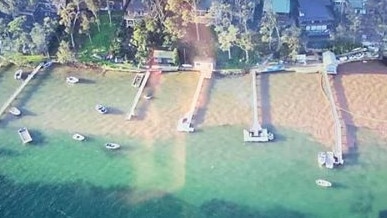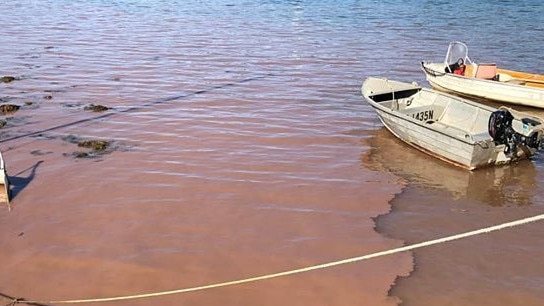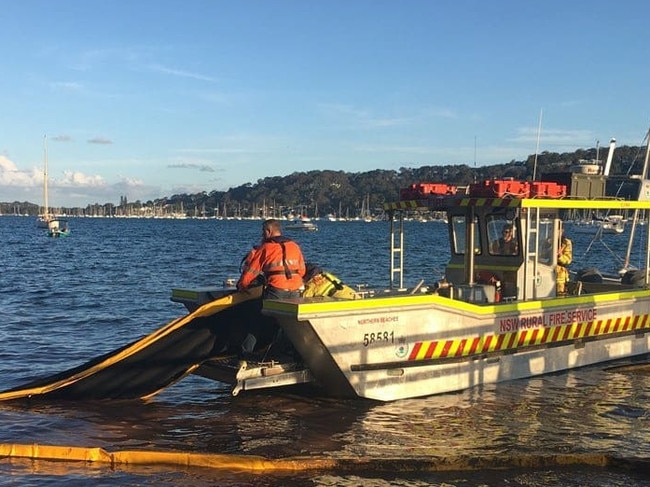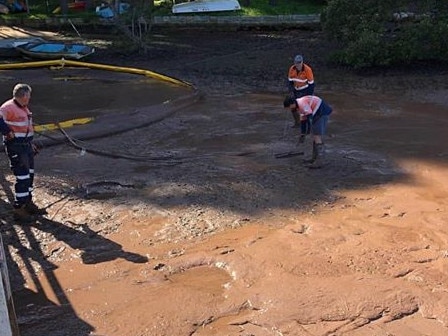Scotland Island, Pittwater: Risk of another ugly spill as underwater drilling restarts
There is a risk that an ugly brown substance, released by underwater drilling, could once again stain a large part of Pittwater.

Manly
Don't miss out on the headlines from Manly. Followed categories will be added to My News.
- North Head probe continues 8 weeks after student’s fall death
- Man tasered in buttocks pleads guilty to punching police
Underwater drilling that caused a large ugly spill which stained a large area of Pittwater last month, has started again.
But Ausgrid, which is installing a new electricity cable under the seabed to Scotland Island, says there is a risk the brown sludge might be released gain.

On July 30 the NSW Environment Protection Authority (EPA), firefighters and NSW Maritime were called in after so-called “drilling mud” leaked into the waterway near the southeast end of the island.
The mud, used as a drilling lubricant and to help seal the tunnel as it is being bored out, leaked from a small crack in the undersea rock near Carols Wharf.
As part if its “Scotland Island Energy Reliability Project”, Ausgrid has hired drilling contractors Dunstans to create the tunnel, using a “horizontal directional drilling” technique, so it can install a back up electricity cable stretching from Church Point to Scotland Island.

After the leak the NSW Fire and Rescue hazardous materials unit based at Forestville was called in to help contain what Ausgrid described as a biodegradable drilling lubricant.
NSW Maritime as well as volunteers from the Rural Fire Service helped place booms in the water stop the non-toxic spill spreading.

The EPA said it was investigating the discharge of drilling fluid which created the brown plume which stretched over hundreds of square metres of Pittwater.
In a letter to Scotland Island residents this week Ausgrid said that as the borehole was being widened on July 30 a small crack in the rock allowed drilling mud to be released near Carols Wharf.

“Drilling has restarted and is now being closely monitored. Initially drilling will occur at low tide so the release point is above the low tide mark, reducing risk,” the letter said.
“There does remain a small risk of further drilling mud releasing through the leakage point,” the letter said.
Ausgrid told residents that silt curtains and response equipment would be on hand in case of another leak.
EPA director of regulatory operations metropolitan, Giselle Howard, said the original spill occurred in a sensitive marine environment, but there were no known impacts on aquatic life.

